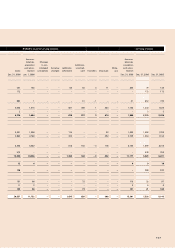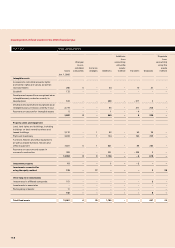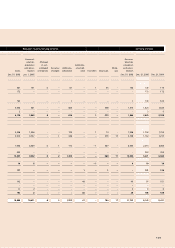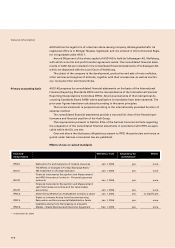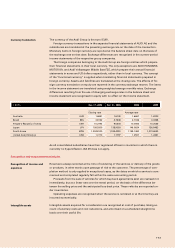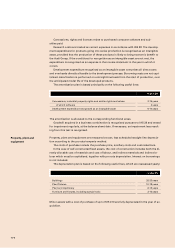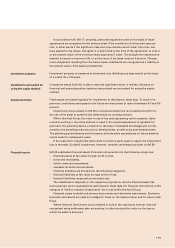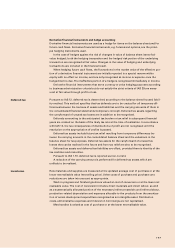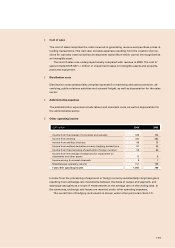Audi 2006 Annual Report Download - page 179
Download and view the complete annual report
Please find page 179 of the 2006 Audi annual report below. You can navigate through the pages in the report by either clicking on the pages listed below, or by using the keyword search tool below to find specific information within the annual report.
1 7 7
Derivative financial instruments and hedge accounting
Derivative financial instruments are used as a hedge for items on the balance sheet and for
future cash flows. Derivative financial instruments, e.g. futures and options, are the princi-
pal hedging instruments used.
In the case of hedges against the risk of changes in value of balance sheet items (fair
value hedges), both the hedging transaction and the hedged risk portion of the underlying
transaction are recognised at fair value. Changes in the value of hedging and underlying
transactions are included in the financial result.
When hedging future cash flows, the fluctuations in the market value of the effective por-
tion of a derivative financial instrument are initially reported in a special reserve within
equity with no effect on income, and are only recognised as income or expense once the
hedged item is due. The ineffective portion of a hedge is recognised immediately in income.
Derivative financial instruments that serve currency or price hedging purposes according
to business administration criteria but do not satisfy the strict criteria of IAS 39 are meas-
ured at fair value through profit or loss.
Pursuant to IAS 12, deferred tax is determined according to the balance sheet focused liabil-
ity method. This method specifies that tax deferrals are to be created for all temporary dif-
ferences between the tax base of assets and liabilities and the carrying amounts of them in
the consolidated financial statements (temporary concept). Deferred tax assets regarding
the carryforward of unused tax losses are in addition to be recognised.
Deferrals amounting to the anticipated tax burden or tax relief in subsequent financial
years are created on the basis of the likely tax rate at the time of realisation. In accordance
with IAS 12, the tax consequences of distributions of profit are not recognised until the
resolution on the appropriation of profits is passed.
Deferred tax assets include future tax relief resulting from temporary differences be-
tween the carrying amounts in the consolidated balance sheet and the valuations in the
balance sheet for tax purposes. Deferred tax assets for the carryforward of unused tax
losses that can be realised in the future and from tax relief are also to be recognised.
Deferred tax assets and deferred tax liabilities are offset, provided there is identity of the
tax creditors and maturities.
Pursuant to IAS 1.70, deferred tax is reported as non-current.
A reduction of the carrying amount is performed for deferred tax assets which are
unlikely to be realised.
Raw materials and supplies are measured at the updated average cost of purchase or at the
lower net realisable value (net selling price). Other costs of purchase and purchase cost
reductions are taken into account as appropriate.
Work in progress and finished goods are valued at cost of conversion or at the lower net
realisable value. The cost of conversion includes direct materials and direct labour, as well
as a systematically allocated portion of the necessary indirect materials and indirect labour,
production-related depreciation and expenses allocable to the products from the amortisa-
tion of series development expenditure recognised as an intangible asset. Distribution
costs, administrative expenses and interest on borrowings are not capitalised.
Merchandise is valued at cost of purchase or at the lower net realisable value.
Deferred tax
Inventories


